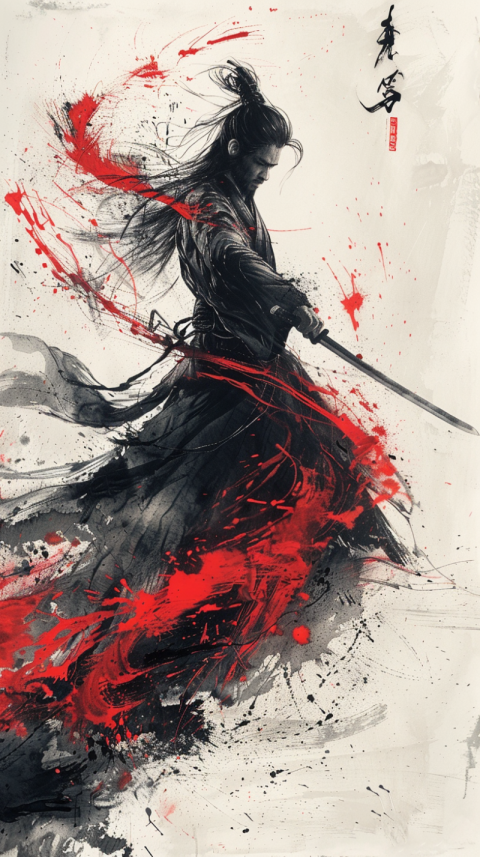











Ninja: Shadow Warriors of Feudal Japan - Ninjutsu
Shrouded in secrecy and often depicted as masters of stealth and deception, the Ninja, also known as Shinobi, were the covert operatives of feudal Japan. Their unique skills in espionage, sabotage, and assassination have made them legendary figures, both feared and admired. This exploration will delve into the shadowy world of the Ninja, separating fact from fiction.
The Origins of Ninjutsu
The origins of Ninjutsu, the art of the Ninja, are shrouded in mystery, with various theories and legends surrounding its development. Some believe it originated in China and was later adapted in Japan, while others claim it developed independently in the mountainous regions of Iga and Koga.
It is generally accepted that Ninjutsu emerged as a distinct martial art during the Heian period (794-1185) and evolved further during the turbulent Sengoku period (1467-1603), a time of constant warfare when the need for covert operations was high.
The Role of the Ninja in Feudal Japan
Unlike the Samurai, who adhered to the Bushido code and often engaged in open warfare, Ninja operated in the shadows, employing unconventional tactics. They were often hired by Daimyo (feudal lords) to:
- Gather Intelligence: Infiltrate enemy territory and gather information about troop movements, fortifications, and political intrigue.
- Sabotage: Disrupt enemy operations by setting fires, poisoning wells, and destroying supplies.
- Assassination: Eliminate key figures, such as enemy generals or political rivals.
- Espionage: Act as spies, gathering information and spreading disinformation.
Ninjutsu Training and Skills
Ninjutsu training was rigorous and encompassed a wide range of skills, including:
- Taijutsu: Unarmed combat techniques, including striking, grappling, and throwing.
- Kenjutsu: Swordsmanship.
- Shurikenjutsu: The art of throwing blades.
- Sojutsu: Spear fighting.
- Bojutsu: Staff fighting.
- Intonjutsu: Techniques of escape and concealment, utilizing the natural environment.
- Kayaku-jutsu: The use of fire and explosives.
- Hensojutsu: The art of disguise and impersonation.
- Shinobi-iri: Methods of stealthy entry and infiltration.
Ninja Weapons and Tools
Ninja utilized a variety of specialized weapons and tools, often adapted from common farming implements:
- Ninjato: A straight, short sword, often depicted as the signature weapon of the Ninja.
- Shuriken: Throwing stars or blades, used to distract or injure enemies.
- Kunai: A versatile tool used for digging, climbing, and as a weapon.
- Makibishi: Caltrops, scattered on the ground to hinder pursuers.
- Kusarigama: A sickle attached to a chain, used for both close and ranged combat.
- Tekko-kagi: Hand claws, used for climbing and fighting.
- Ashiko: Foot spikes, used for climbing.
- Kaginawa: A grappling hook, used for scaling walls.
Famous Ninja Clans and Figures
While historical records on Ninja are scarce, some clans and individuals have become legendary:
- Iga and Koga Clans: The two most famous Ninja clans, known for their expertise in Ninjutsu.
- Hattori Hanzo: A renowned Ninja who served Tokugawa Ieyasu, often depicted as a master of disguise and combat.
- Fuma Kotaro: The leader of the Fuma Ninja clan, known for their aggressive tactics and use of psychological warfare.
- Ishikawa Goemon: A legendary outlaw Ninja who stole from the rich and gave to the poor, often compared to Robin Hood.
- Mochizuki Chiyome: A noblewoman who is said to have created an all-female Ninja network.
Ninja in Popular Culture
Ninja have become iconic figures in popular culture, often depicted as stealthy assassins with superhuman abilities. They are frequently featured in:
- Movies: Enter the Ninja, Ninja Assassin, The Last Samurai
- Television Shows: Teenage Mutant Ninja Turtles, Naruto, Samurai Champloo
- Video Games: Tenchu, Ninja Gaiden, Metal Gear Solid
- Manga and Anime: Naruto, Basilisk, Ninja Scroll
The Reality Behind the Myths
While popular culture often portrays Ninja with supernatural powers, the reality was likely more grounded. They were highly trained individuals who relied on their skills, intelligence, and specialized tools to accomplish their missions. Their ability to blend into the shadows and utilize unconventional tactics contributed to their mystique and legendary status.
Conclusion
The Ninja were more than just assassins; they were masters of espionage, sabotage, and unconventional warfare. Their skills in Ninjutsu, combined with their ability to operate in secrecy, made them valuable assets in feudal Japan. Although much of their history is shrouded in mystery, their legacy continues to fascinate and inspire, solidifying their place as legendary figures in both history and popular culture.
Ninja, Ninjutsu, Shinobi, Japan, Feudal Japan, Stealth, Espionage, Assassination, Martial Arts, Samurai, Hattori Hanzo, Iga, Koga, Ninjato, Shuriken, Kunai, Kusarigama, Katana, Ninja Clan, Ninja Warrior, Ninja Assassin, Ninja History, Ninja Weapons, Ninja Tools, Ninja Training, Ninja Techniques, Japanese History, Covert Operations, Shadow Warrior, Ninja Movies, Ninja Anime, Ninja Games, Manga, Fuma Kotaro, Ishikawa Goemon, Mochizuki Chiyome, Ninja Legends, Ninja Myths, Ninjutsu Techniques, Intonjutsu, Hensojutsu, Shinobi-iri, Taijutsu, Kenjutsu, Shurikenjutsu, Ninja Star.

